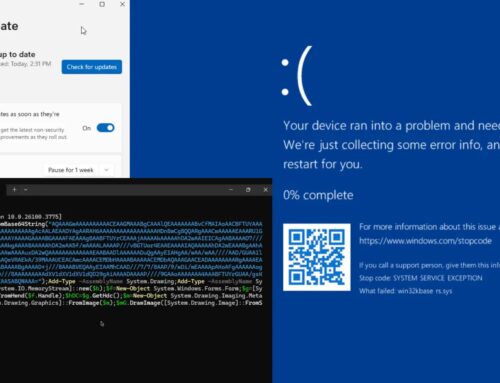
Renting Android Malware With 2FA Interception, AV Bypass is Getting Cheaper Now
The Lucrative Business of Android Malware-as-a-Service: 2FA Interception and AV Bypass on Demand
The barrier to entry for cybercrime has never been lower. A significant shift in the cybercriminal landscape sees sophisticated Android malware becoming readily available through Malware-as-a-Service (MaaS) platforms. Criminal enterprises no longer require extensive technical expertise to deploy advanced mobile threats; instead, they can subscribe to ready-to-use malware kits for as little as $300 per month. This democratization of cybercrime tools, particularly those offering advanced capabilities like two-factor authentication (2FA) interception and antivirus (AV) bypass, poses a substantial and evolving threat to individuals and organizations alike.
The Evolution of Mobile Cybercrime
Traditionally, developing potent mobile malware demanded significant programming skills, deep knowledge of Android’s operating system, and expertise in evasion techniques. The emergence of MaaS models has fundamentally altered this dynamic. Threat actors, even those with limited technical proficiency, can now leverage pre-built, fully functional malware strains, complete with dedicated support channels, updates, and user-friendly interfaces. This market-driven approach to cybercrime lowers development costs for threat actors and simultaneously increases the volume and sophistication of attacks.
Key Capabilities: 2FA Interception and AV Bypass
The most alarming facet of these readily available Android MaaS offerings is their inclusion of sophisticated capabilities previously associated with state-sponsored or highly organized criminal groups:
- Two-Factor Authentication (2FA) Interception: Many online services rely on 2FA as a critical security layer. These MaaS platforms enable threat actors to intercept verification codes delivered via SMS, app-based notifications, or other methods. This bypass essentially negates the security benefits of 2FA, allowing attackers to gain unauthorized access to bank accounts, social media profiles, and other sensitive applications. This often leverages techniques like overlay attacks or direct SMS interception.
- Antivirus (AV) Bypass: Modern Android malware kits are engineered with built-in evasion techniques designed to circumvent detection by common mobile antivirus solutions. This can involve polymorphic code, obfuscation, anti-analysis checks, and dynamic payload delivery, making it exceedingly difficult for traditional security measures to identify and neutralize the threat.
The Business Model of MaaS
The MaaS model operates much like legitimate software-as-a-service platforms, albeit for illicit purposes. Subscribers pay a recurring fee, typically monthly, to access the malware toolkit. This fee often includes:
- Access to the malware builder or control panel.
- Ongoing updates to add new features or enhance evasion capabilities.
- Customer support from the malware developers.
- Access to botnet management tools to control infected devices.
This subscription-based model ensures a continuous revenue stream for the malware developers, incentivizing them to maintain and improve their offerings, creating a self-sustaining illicit ecosystem.
Impact on Cybersecurity Landscape
The proliferation of accessible, advanced Android malware has profound implications:
- Increased Attack Surface: A larger pool of less skilled attackers can now launch sophisticated campaigns.
- Wider Reach: Campaigns can target a broader range of victims, from individuals to corporate users.
- Enhanced Persistence: AV bypass capabilities mean infections are harder to detect and remove.
- Erosion of Trust: Successful 2FA bypass attacks severely undermine user confidence in security measures.
Notable Android Malware Families Leveraging MaaS (Examples)
While specific CVEs for broad malware families are rare, as vulnerabilities are often exploited by the malware, not inherent to the malware itself, understanding common attack vectors provides context. Some well-known Android malware strains that have been observed or suspected of leveraging MaaS-like distribution models or capabilities include:
- Anubis: Known for banking fraud, keylogging, and remote access.
- Cerberus: Famous for its sophisticated overlay attacks and 2FA bypass against banking applications.
- Octo: A variant of Exobot, capable of remote control, screen mirroring, and SMS interception.
Remediation Actions and Mitigations
Protecting against these sophisticated Android MaaS threats requires a multi-layered approach for both individuals and organizations.
For Individuals:
- App Source Verification: Only download apps from official and trusted sources like the Google Play Store. Avoid third-party app stores or direct APKs from untrusted websites.
- Permission Review: Carefully review app permissions before installation. Be wary of apps requesting excessive or irrelevant permissions (e.g., a calculator app requesting SMS access).
- Software Updates: Keep your Android operating system and all installed applications updated. Updates often include critical security patches.
- Enable Google Play Protect: Ensure Google Play Protect is active on your device, as it scans apps for malicious behavior.
- SMS and Call Scam Awareness: Be vigilant against phishing attempts via SMS or calls that try to trick you into revealing 2FA codes or clicking malicious links. Legitimate services will never ask for your 2FA code over the phone or email.
- Hardware Security Keys for 2FA: Where possible, opt for FIDO-based hardware security keys for 2FA. These are generally resistant to phishing and interception attacks compared to SMS or app-based 2FA.
For Organizations:
- Mobile Device Management (MDM) / Unified Endpoint Management (UEM): Implement robust MDM/UEM solutions to enforce security policies, manage app installations, and monitor device compliance.
- Mobile Threat Defense (MTD): Deploy MTD solutions on all employee-owned and corporate-owned mobile devices. MTD goes beyond traditional antivirus, offering real-time threat detection, behavioral analysis, and anomaly detection.
- Regular Security Training: Conduct regular cybersecurity awareness training for employees, focusing on mobile phishing, social engineering, and the dangers of sideloading apps.
- Conditional Access: Implement conditional access policies that restrict access to sensitive corporate resources based on device health, compliance, and location.
- Network Security: Utilize network-level filtering and intrusion detection/prevention systems to block access to known command-and-control (C2) servers associated with mobile malware.
- Zero Trust Architecture: Adopt a Zero Trust security model, where no user or device is inherently trusted, requiring continuous verification regardless of network location.
Relevant Tools for Detection and Mitigation
| Tool Name | Purpose | Link |
|---|---|---|
| Google Play Protect | Built-in Android security for app scanning. | https://source.android.com/docs/security/features/play-protect |
| Various MTD Solutions (e.g., Zimperium, Lookout, Check Point Harmony Mobile) | Advanced mobile threat detection, behavioral analysis, anti-phishing. | (Provider specific, e.g., https://www.zimperium.com/) |
| MDM/UEM Platforms (e.g., Microsoft Intune, VMware Workspace ONE, IBM MaaS360) | Device management, policy enforcement, app deployment. | (Provider specific, e.g., https://www.microsoft.com/en-us/security/business/endpoint-management/microsoft-intune) |
| FIDO Security Keys (e.g., YubiKey, Google Titan Key) | Strong phishing-resistant hardware 2FA. | https://fidoalliance.org/ |
Conclusion
The accessibility of advanced Android malware through MaaS platforms represents a significant escalation in mobile cyber threats. The capabilities to intercept 2FA and bypass antivirus solutions empower a wider range of threat actors, leading to an increased volume and sophistication of attacks. Staying secure demands continuous vigilance, adherence to best security practices, and the strategic deployment of robust mobile security solutions. The era of cheap, powerful mobile malware is here, underscoring the urgent need for proactive defense strategies.





